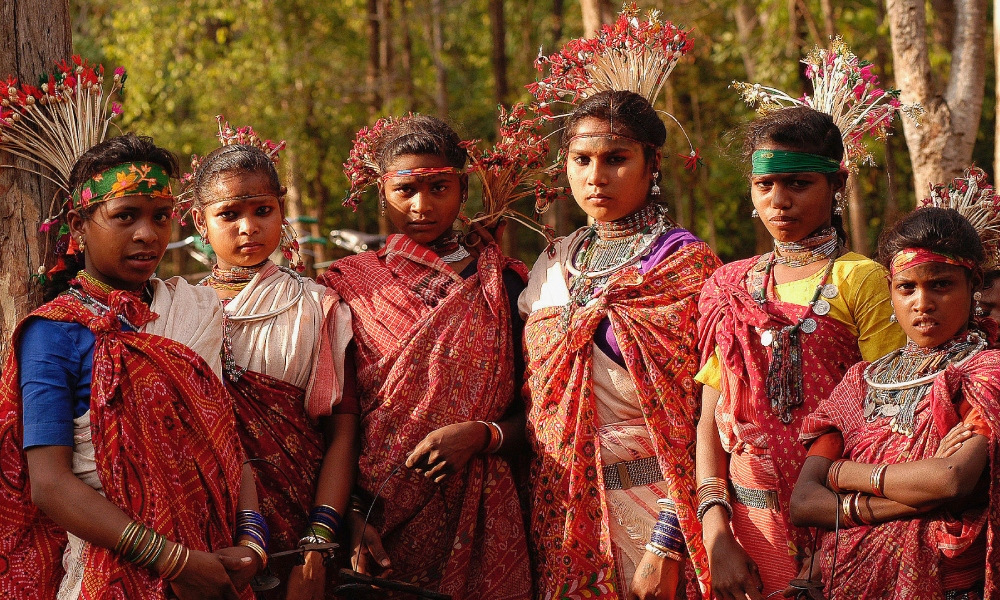
Image Credits: Wikipedia
International Day Of The World's Indigenous Peoples: How Tribals Are Preserving Biodiversity Through Traditional Practices
Writer: Prattusa Mallik
A student of Journalism and Audio-Visual Communication, interested in words and silences alike, I aim to bring the narratives of the periphery to the centre, one story at a time. When not working, I'm usually caught reading, thinking, writing, watching Friends, or stargazing.
India, 9 Aug 2021 2:30 PM GMT
Editor : Ankita Singh |
A literature lover who likes delving deeper into a wide range of societal issues and expresses her opinions about the same. Keeps looking for best-read recommendations while enjoying her coffee and tea.
Creatives : Ankita Singh
A literature lover who likes delving deeper into a wide range of societal issues and expresses her opinions about the same. Keeps looking for best-read recommendations while enjoying her coffee and tea.
While several cultural aspects of the tribal societies remain a mystery, it is a well-known fact that tribals have lived in few of the most hostile environmental conditions on the planet. Consequently, they have gained immense knowledge about the development and management of the forest ecosystem.
International Day of the World's Indigenous Peoples is celebrated every year on August 9. Estimates suggest that they comprise almost 300 million tribals globally, 150 million of whom belong from Asia alone. India boasts a population of 68 million tribals, representing 573 tribal communities.
While several cultural aspects of the tribal societies remain a mystery, it is a well-known fact that tribals have lived in few of the most hostile environmental conditions on the planet. Consequently, they have gained immense knowledge about the development and management of the forest ecosystem. This has later turned out to be beneficial for eco-restoration and maintaining a balance in the ecosystem.
And one of the practices that have helped the tribals establish and maintain this balance is by fostering biodiversity. Here are four ways in which tribals have played a crucial role in maintaining the biodiversity of ecosystems, especially in India.
Maintaining Biodiversity Through Traditional Practices In Agriculture
While communities worldwide are increasingly shifting towards sustainable agricultural practices, the tribal societies seemed to have been the pioneers in the technique. For instance, tribal communities like Irulas, Malayalis, and Muthuvas in Tamil Nadu cultivate conventional cultivars like millets, paddy, pulses, and vegetable crops. This choice of crops has been influenced by their dietary practices and their dependence on rain-fed irrigation. Thus, selecting and conserving the seeds from one season to the next has enabled them to sustain and remain self-reliant. But most importantly, several such crops are now cultivated and conserved only by tribal communities in southern India.
Use Of Wild Species As Food, Medicinal Herbs
Compared to the urban population, the tribals usually consume all parts of edible plants. Thus, they depend on several wild species for bulbs, roots, seeds, tubers used for edible purposes. Simultaneously, they follow the rule of environmental conservation while harvesting these plants, establishing ecological prudence. For instance, tubers of plants such as Dioscorea spp. are harvested only when the vine's leaves have physiologically matured, turning yellow. The wild tubers are dug carefully to avoid damage to the associated species.
Most tribes have elderly members who possess immense knowledge of medicinal plants for curing the diseased, which might be life-threatening. These plants are used solely or in combination with other herbs. Each tribe has its unique system of collecting plants and preparing medicines. Plant parts used for medicines are used at a specific time, either before fruiting or in any particular season. The same plant might be used for different diseases: for instance, Calotropis Gigantea is used as a vermicide and chest pain. This results in the conservation of many plants, some of which are not even available outside a particular region.
Maintaining Biodiversity Because Of Spirituality
Most tribal communities conserve plants because of their faith in 'Magico' – a religious belief that plants are the habitats of Gods and Goddesses. This culture is dominant in the tribal pockets of Central India, such as the Balaghat, Dindori, and Mandala districts of Madhya Pradesh. It has also been observed in the Bilaspur and Kawardha districts of Chhattisgarh. Research indicates that plants have flowers that profoundly influence the religious beliefs of the tribals residing here. Their worship of trees has resulted in the cultivation of myriad species like Arjun, Basi, Indian Bael, Neem, and several others.
In-situ Conservation
In-situ conservation refers to the on-site (in the place of origin) conservation or the conservation of genetic resources in natural populations of plants. There is no limit to the impact created by this practice of the tribals. Several virgin forests, flora, and fauna have been preserved in the sacred groves of tribals, which might have otherwise been disappeared from their natural ecosystem.
The sacred groves refer to the natural forests in Central, North-East, and Peninsular India, where all kinds of human activities are prohibited. These groves are home to multiple unique species of trees. For instance, a giant Mango tree covered by the twiner of Tinospora sinensis and having a hanging stem that looks like an elephant trunk is present in the sacred grove of Maharashtra in the Western ghat.
Also read: From Trash To Treasure: This Social Enterprise Transforms Waste Plastic Into Fabric Using Charkha
 All section
All section













